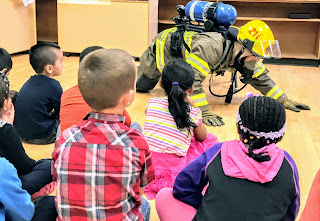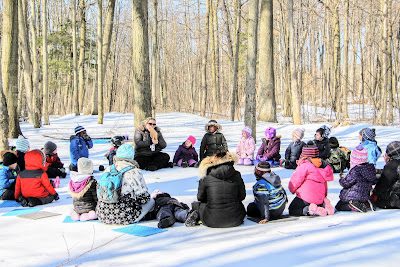Home » Shifting Our Thinking in Whole Group Instruction
Posted by:
Categories
Date
When we started our journey in Kindergarten together, we met as a whole group with the class a few times throughout the day. We wanted to maximize all of the moments of learning opportunities and scheduled in read alouds, music, math, and modeled writing.
As we have continued to grow in our knowledge and understanding of our children’s development and needs we have shifted away from meeting multiple times in a whole group to just once a day (if you don’t include our Nutrition Break eating time).
We have moved away from an “academic” focus at our whole group time towards a community building experience or an opportunity for collective knowledge building. We know that teaching something like letters and sounds in a whole group is not the most effective way for children to be exposed and learn.
When showing the whole group the letter “S”… one student may confuse it for a number 5 not knowing that numbers and letters carry different meanings and another student may already be reading fluently and thus learning about the letter “S” is not something that is needed. We have found that this type of teaching is more effective in the context of a small group.
So what exactly does whole group learning look like for us?
We structure our whole group instruction to be 10-15 minutes long once a day. During our whole group focused learning time we will do something that all children can connect to, contribute to, and benefit from.

Project Work: Interviewing Experts, Asking Questions

Reflecting on Math Documentation as a whole group.

Forest Read Aloud: Not a Stick – We will often extend our conversations about books into play,
dramatic explorations, and through writing.

Whole Group Drawing Activity: We looked at the shapes, lines and curves and broke down the pictures to draw.
Collaborative Approach: We will take turns leading the whole group instruction in our classroom. When one educator leads, the other educator will support students in listening, focusing, and actively participating. Sometimes we will also use this as an opportunity to document or record student conversations and thinking with photos, videos, and notes.
Flexible Meeting Space: We have 2 large spaces in our room where we will meet as a whole group (our building area and our dance studio area). This allows for us to save projects by meeting in different spaces and also accommodates for different types of learning. Flexible meeting spaces are great because they are multipurpose, saving an area of the room for whole group when it is only 10-15 minutes of our day does not make sense to us! We like to maximize all of the space in our learning environment to best support student learning.
Wiggle Seats: We use small circular cushions for some students that may need a strategy for sitting in one spot or who need the ability to rock or move while listening.
Visual Pictures: We use a small collection of picture symbols to support nonverbal communication and redirection while engaged in a whole group. This supports us in limiting the language that we use and instead using a visual symbol or picture to redirect or support students.
Sitting in a Circle: We have found that when having a discussion or building knowledge as a class that sitting in a circle invites more active participation and values what each person is contributing.
Strategic Seating: We will invite children to choose their own spot when joining the whole group, but if they are having a difficult time we will then invite them to sit alongside one of the educators or in a spot where they will be better able to concentrate.
Minimizing Distractions: Think about where you are meeting as a whole group. What materials, shelves, or things may become a distraction for children? We are conscious about covering or moving materials that may distract the children from their learning.
Sign up for our mailing list if you would like to stay connected, learn about new ideas that can be implemented in your classroom, get access to exclusive material and offers.
We respect your privacy.
Copyright 2019 – PCE Connecting Learners. | Designed & Developed by BrandCo House.
